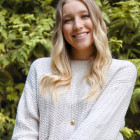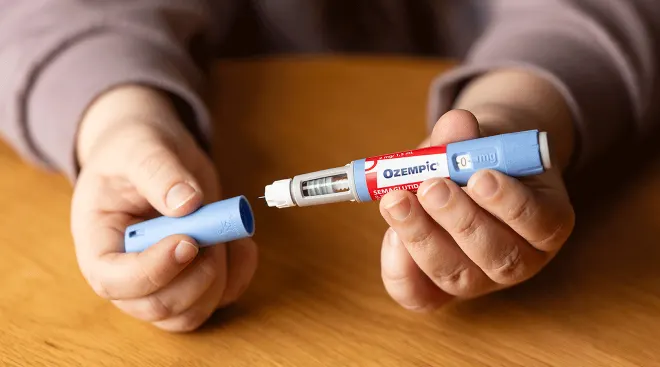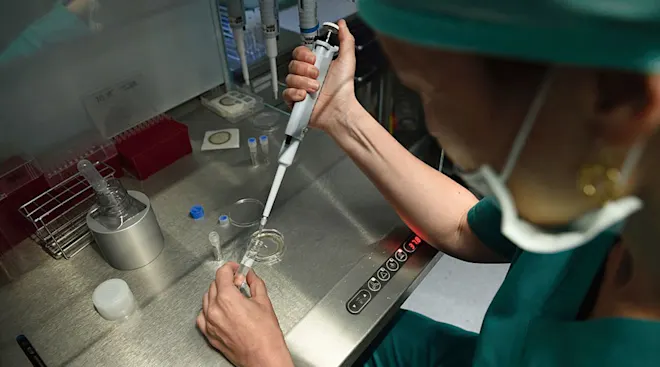How Charting Your Basal Body Temperature Could Help You Conceive
If you’re trying to conceive, charting your basal body temperature (BBT) to detect ovulation is a useful way to figure out when your fertility’s at its peak. But there are a few key things to keep in mind before you start this method if you want to boost your chances of getting pregnant. Here’s the scoop on all things basal body temperature—aka waking temperature—straight from fertility experts.
Basal body temperature is the lowest body temperature attained by your body while it’s at rest, says Kerry Krauss, MD, an ob-gyn in Philadelphia and medical director at Natural Cycles, an FDA-cleared, hormone-free birth control method. Compared to the typical body temperature taken throughout the day, your basal body temperature is a more stable and reliable reading. “BBT is measured first thing in the morning before getting out of bed, eating, drinking or engaging in any activity, whereas typical body temperature can be measured at any time and is subject to fluctuations due to physical activity, food intake, emotional state and environmental conditions,” explains Krauss.
This is why taking your basal body temperature is so useful for tracking ovulation and fertility. “Unlike the temperature readings you might take when you’re feeling sick, BBT is measured under very specific conditions to give you insights into your fertility cycle and natural rhythm,” says Jessica Boone, MPA, PA-C, an infertility physician assistant and owner of Fortitude Fertility Consulting. She says it’s best to measure it immediately after waking up and before any physical activity.
Basal body temperature is typically lower than your average daytime body temperature, says Krauss. It usually ranges from about 97 to 97.5 degrees Fahrenheit (36.1 to 36.4 Celsius) before ovulation to between 97.6 and 98.6 Fahrenheit (36.4 to 37 Celsius) after ovulation, she says.
Tracking your basal body temperature can be helpful in figuring out when you’re ovulating, but it can also tell you more about your health. Your waking temperature can give you clues into:
- Ovulation. A slight temperature increase occurs after ovulation due to the rise in progesterone, says Krauss. “A gentle rise in BBT is your body’s way of signaling that ovulation has taken place, a key moment for those tracking fertility,” says Boone. If your basal body temperature has been elevated for 18 or more days, though, it could be an early sign of pregnancy, says Mayo Clinic.
- Your menstrual cycle. Your BBT can also help you identify which part of the menstrual cycle you’re in, says Krauss. Generally, you’ll find that lower temperatures will accompany the follicular phase, while your luteal phase will bring on higher temperatures. This knowledge can help you gain insight into your cycle length and regularity.
- Thyroid function. Krauss says that consistently low BBT readings (especially below 97 Fahrenheit or 36.1 Celsius) could indicate hypothyroidism, a condition in which the thyroid gland is underactive and slows down your metabolism. While it’s not a definitive diagnosis, it’s something to check in with your provider about if you notice it.
- Hormonal imbalances. Irregular basal body temperature patterns can suggest hormonal imbalances, which can contribute to issues like anovulatory cycles (cycles where ovulation doesn’t occur). “For example, consistently low or highly variable temperatures might indicate insufficient progesterone or other hormonal issues,” says Krauss.
- General health and sickness. Sudden deviations from the typical basal body temperature pattern can indicate illness, says Krauss. For example, a fever due to an infection can cause a temporary BBT spike.
- Stress levels. “Irregular or unexpected changes in BBT may also be linked to increased stress levels, which can impact hormonal balance and affect the body’s overall function, including reproductive health,” says Krauss.
Being hungover or drinking alcohol, sleeping more or less than usual, irregular sleep cycles, environmental factors like temperature and menopause can also affect your basal body temperature, adds Krauss.
Your basal body temperature and your menstrual cycle are closely linked. Here’s what happens at each stage, according to Krauss:
- Follicular phase. Your basal body temperature tends to stay quite low due to the low levels of estrogen and progesterone during this phase, which starts with the first day of your period and ends with ovulation. You’ll usually find your temperature reading to be between 97 and 98 Fahrenheit (36.1 to 36.6 Celsius).
- Ovulation. Immediately before ovulation, which lasts about 24 hours, you’ll notice a significant drop in BBT. A surge in luteinizing hormone (LH) triggers ovulation, which is followed by an increase in progesterone.
- Luteal phase. During the luteal phase, which takes place after ovulation and before your period, your basal body temperature will rise by about 0.5 to 1 degree Fahrenheit (0.3 to 0.6 Celsius) due to the increase in progesterone after ovulation. Your progesterone levels will stay elevated for about 14 days and then start to decrease, causing your BBT to return to baseline a day or two before your period starts.
- Menstruation. After your temperature drops back down to your baseline BBT, your period should follow soon after. “If it remains elevated when your period is due, this is a good time to take a pregnancy test,” says Krauss.
Check out a visual of how your basal body temperature ebbs and flows throughout your cycle.
To take your basal body temperature, Krauss recommends using a basal body thermometer. “This is a specific kind of digital thermometer that shows two decimal places, and those two decimal places are particularly important in capturing the most subtle changes in your BBT,” she says.
Take your temperature first thing in the morning before you sit up or get out of bed, says Krauss. Aim to measure your BBT at least five times a week. For a more accurate reading, skip days on which you didn’t get at least three hours of uninterrupted sleep.
“Place the thermometer orally, vaginally or rectally—a consistent method is key—and record the temperature at the same time each day,” says Boone. You can track your temperature using pen and paper, in your phone’s notes or using a basal body temperature tracker app.
Trying to conceive? As you track your basal body temperature daily, you’ll want to look out for slight dips in temperature followed by a rise of about 0.5 to 1 degrees Fahrenheit (0.3 to 0.6 Celsius), says Krauss. “This will allow you to pinpoint your ovulation day because the day before this rise is likely when you ovulated,” she says. “Identifying this pattern over several cycles can help predict fertile windows,” says Boone.
If you’re trying to get pregnant, there are many different ways to track ovulation. Here, Boone lists a few alternatives to the basal body temperature method:
- Ovulation predictor kits. Often called ovulation tests or strips, these kits detect the surge in LH hormone in your urine before ovulation. A positive test means you’re at your most fertile.
- Cervical mucus monitoring. Looking out for changes in cervical mucus is another way to see if you’re in the fertile window, Boone says. During ovulation, you’ll notice that your discharge becomes “clear and stretchy, like egg whites,” she says.
- Fertility monitors. Advanced tools like fertility monitors can analyze ovulation symptoms like hormone levels in urine, changes in saliva and vaginal fluids to tell you more about your cycle.
- Tracking physical signs. It helps to pay attention to your body’s specific signals. “Some women notice ovulation pain or increased libido around ovulation,” says Boone.
If you’re trying to conceive, then using the basal body temperature method can help you determine when you’re most fertile. Just make sure to track regularly and at the same time each day!
Please note: The Bump and the materials and information it contains are not intended to, and do not constitute, medical or other health advice or diagnosis and should not be used as such. You should always consult with a qualified physician or health professional about your specific circumstances.
Plus, more from The Bump:
Jessica Boone, MPA, PA-C, is an infertility physician assistant and the owner of Fortitude Fertility Consulting. She earned her MPA degree from Loma Linda University and is a member of the American Academy of Physician Associates (AAPA), Colorado Academy of PAs (CAPA) and American Society for Reproductive Medicine (ASRM).
Kerry Krauss, MD, is an ob-gyn in Philadelphia and medical director at Natural Cycles, an FDA-cleared, hormone-free birth control method. She received her medical degree from the Sidney Kimmel Medical College at Thomas Jefferson University and has been in practice for over 10 years.
Mayo Clinic, Basal Body Temperature for Natural Family Planning, February 2023
Learn how we ensure the accuracy of our content through our editorial and medical review process.
Navigate forward to interact with the calendar and select a date. Press the question mark key to get the keyboard shortcuts for changing dates.






















































